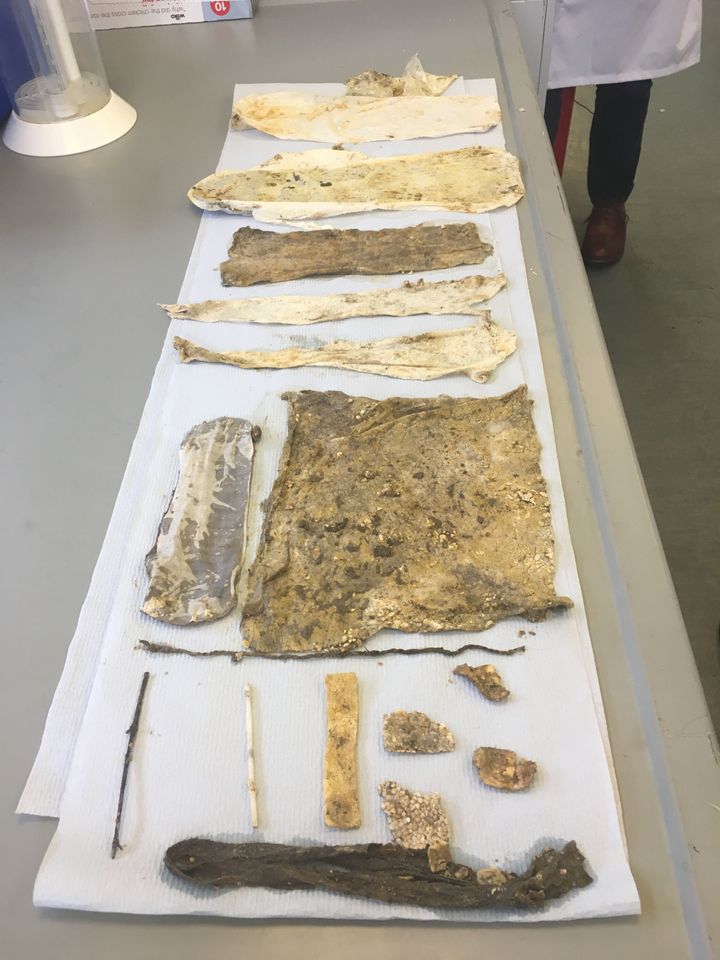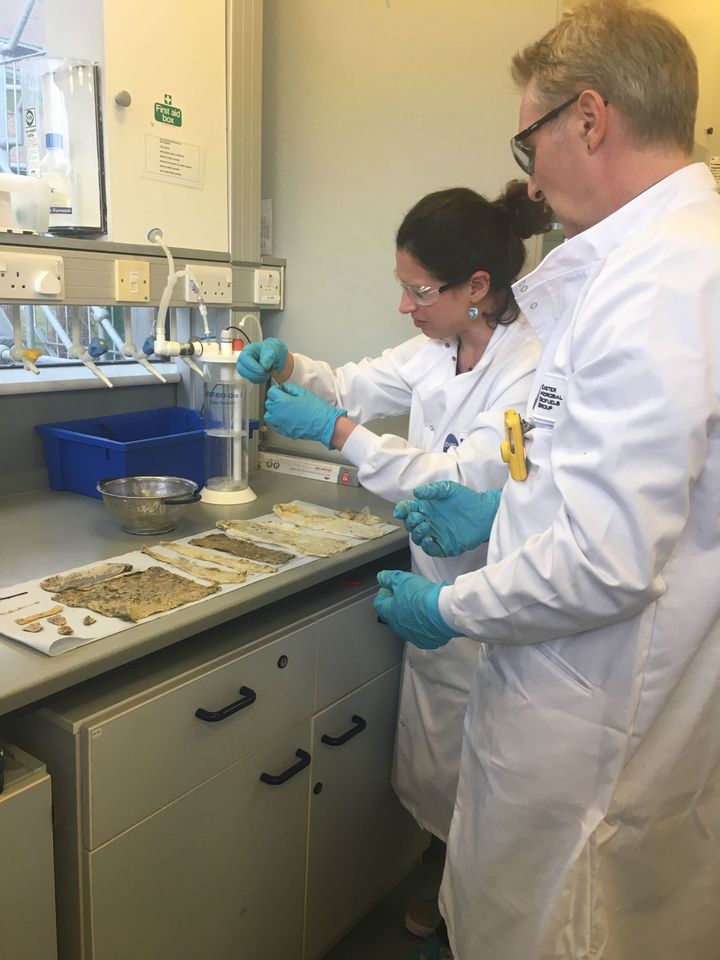Hygiene products and household cooking fats have played a pivotal role in the formation of the giant fatberg found lurking under a seaside town, scientists have revealed.
The 64-metre monster - greater in length than the Tower of Pisa - was discovered under The Esplanade in Sidmouth, Devon, just before Christmas last year.
A team of scientists from the University of Exeter were asked to carry out an extensive ‘autopsy’ of the fatberg to try to solve the mystery of how it was constructed and whether it posed any environmental risks.
The scientists were given four samples from the fatberg, each weighing around 10kg, after South West Water workers spent eight weeks removing it from the sewer.
In total, 36 tanker loads - each 3,000 gallons - of debris were excavated and removed by a dedicated team of seven specialists.
The fatberg was taken to a local sewage treatment works where it was fed into the anaerobic digester and produced energy to power the plant.
The university team found that the samples they received were mostly made of animal fats - consistent with domestic food preparation - combined with household hygiene products such as wet wipes and sanitary products, as well as natural and artificial fibres from toilet tissues and laundry.
They also discovered the fatberg contained no detectable levels of toxic chemicals - meaning its presence in the sewer, while increasing the risk of a blockage, did not pose a chemical or biological risk to the environment or human health.

Synthetic biology expert Professor John Love, who led the project, said: “Analysing the fatberg samples in such a short timeframe was an exciting challenge requiring the expertise from a number of specialised scientists.
“We worried that the fatberg might concentrate fat-soluble chemicals such as those found in contraceptives, contain now-bannIn total, 36 tanker loads, each 3,000 gallons, of debris were excavated and removed by a dedicated team of seven specialists.

The results suggested that the fats found were more in keeping with domestic food preparation than commercial food outlets, while the chemicals were those found in personal care products, rather than pharmaceuticals or pesticides.
They also found no evidence of harmful viruses or bacteria - offering reassurance given the importance of Sidmouth’s bathing waters to the local community and tourists alike.
Andrew Roantree, from South West Water, added: “Although we deal with around 8,500 blocked sewers every year, the Sidmouth fatberg was by far the largest discovered in our service history.
“We wanted to learn as much as we could about it, how it was created and what it was made of to help us avoid further fatbergs in future.
“The results confirm our suspicions, that fat and non-flushable products such as wipes are the main culprits, and that fatbergs are a consequence of the individual and collective impact that our behaviour has on our environment.
“We will be using these results to help us education, inform and change the behaviours of people in terms of what they are putting down the toilet and sink. That’s not just applicable to Sidmouth, but across our region.”

